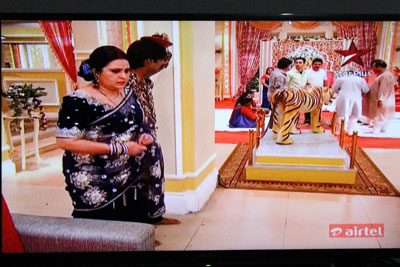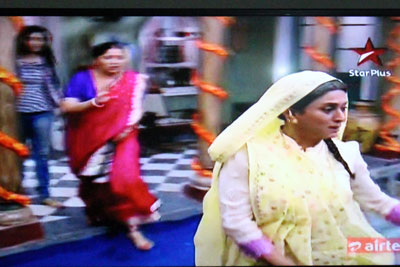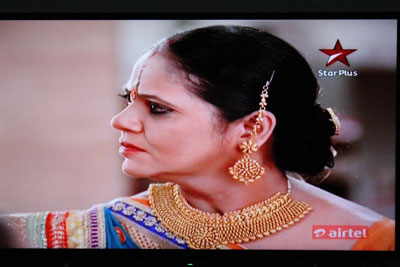The primetime Indian television primarily focuses on family dramas. The popularity of soap operas focusing on traditional values and families reflect the cultural preference of the nation. Even though there are plenty of American and British programming on television, shows such as Diya Aur Baati Hum (We are like earthen lamp and its wick), Mere Angne Mein (In my courtyard), and Suhaani Si Ek Laadki (A pleasant girl) and Sasural Simar Ka (Home of Simar in-law's) which often show traditional households with extended families living under the same roof are more popular. Modern Indian household however is more nuclear, couples work outside the home, and live and aspire for a western lifestyle.
The primetime soaps often focus on the antagonist relationship between mother-in-law and daughter-in-law. Drama is further created through interaction with other family characters who are constantly plotting and scheming to create rifts among the family members. The family always overcome these and at the end stays together. In these television programs, an ideal daughter-in-law is one who obeys the mother-in-law, is sacrificing and looks after the family. At times when she works outside the home, she still caters to all the needs of the extended family. This ideal is still preferred by Indian families where arranged marriages are still the norm.
The families shown on television, whether traditional or modern, are often rich. They live in huge houses. Women wear expensive dresses and jewelry, the kind that ordinary people wear during special occasions such as weddings. Lives of farmers, poor and middle-class families are largely missing on Indian television. Television, like Bollywood films, has become a medium that reflects desires and aspirations of Indians and not the complex reality of everyday lives of people.


